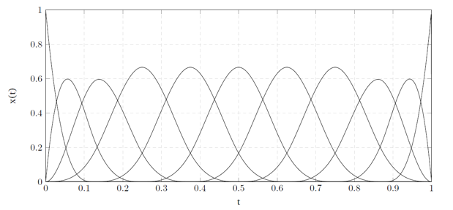Another advantage of the in-house Hammerstein-Wiener Modeler is the great flexibility in the choice of non-linearities. In the System Identification Toolbox, only a limited set of non-linear functions is offered and many of them have problems when modelling RF devices, as the focus here is especially on the frequency domain.

An example of this would be the section-wise linear functions that are used as default, which cause high-frequency disturbances due to a lack of smoothness at the breakpoint transitions. More powerful approaches must therefore be used especially for RF devices. An example of this would be the use of splines. Although these are bound within an application area (dynamic range), they allow us to create very smooth non-linear mappings. Particularly noteworthy is the use of B-splines as a weighted sum of basis functions. These are very freely configurable and are also more straightforward than the approaches used in the System Identification Toolbox. An example of a possible set of basis functions can be found in the figure above.
